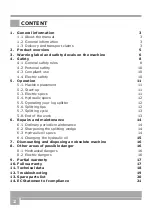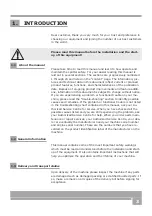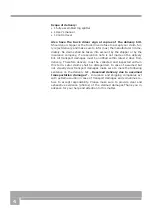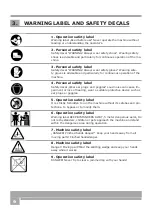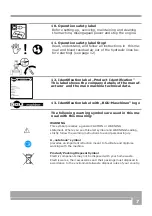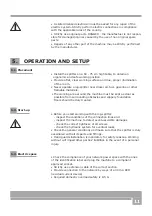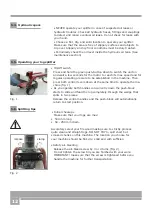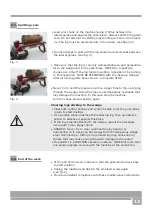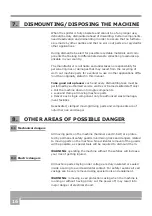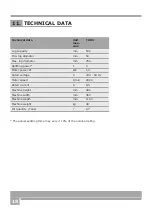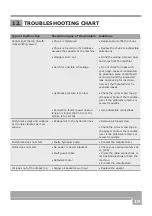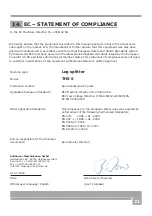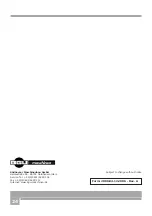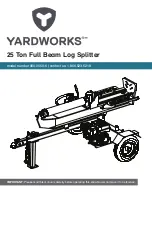
15
6.4 Changing the hydraulic oil
• Drive the push-block back to start position.
• When changing the oil, never let used oil drop down on the ground,
rather collect whole of it in a sealed container for due disposal. Oil
disposal containers should be of at least 4 l capacity.
• Release and remore the oil dipper rod and pull it without extracting
the oil gasket (Fig. 6).
• Tip the splitter over and set it upright on its wheeks to drain the oil
out of the pressure lines. (Fig. 7).
Fig. 6
• Then tip the splitter over again till the oil filler is facing up. This is a
very easy one-man operation!
• Fill the new oil in (2.7 l) using a new clean funnel.
• Clean both the dipper rod and the oil gasket making sure that the
gasket is tightly in place. Worn out gasket should be replaced before
starting to work again.
• Secure the dipper rod tightly in place avoiding to apply excessive
torque on the screw and therefore to avoid damaging the oil gasket
and the thread of the cylinder cap.
Fig. 7
•
Used oil is very polluting and should be disposed in accor
dance with local rules!
Do not spill nor dispose used oil with other domestic waste.
Checking the oil level
- Unscrew and pull the dipper rod out, clean the rod and the gasket
(broken gaskets to be replaced).
- Dip the rod back in down to the stop and then pull it out again.
Lower Upper Oil gasket • If the oil level is between the two marks, it means the oil level in-
mark mark the tank is enough.
• If the level hardly reach the lower mark, then you need to top up
oil in the tank using a new/clean funnel.
- Dip and screw the rod back in.


